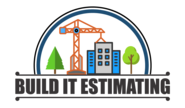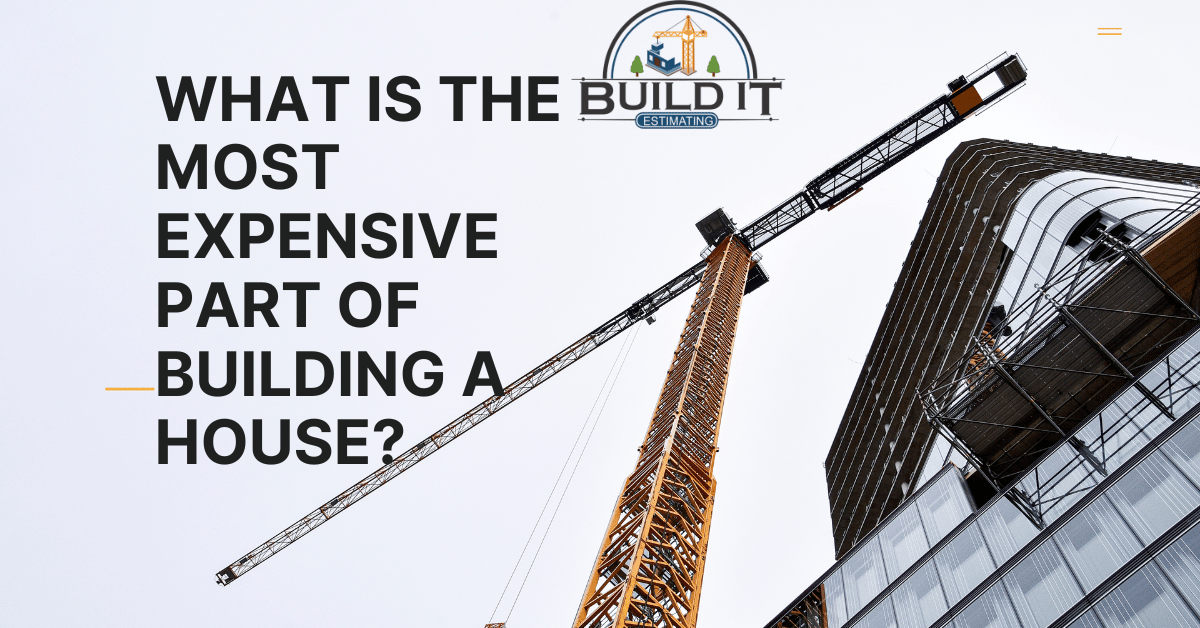Building a house is a monumental endeavor that involves numerous intricate steps, each contributing to the overall cost. Understanding these expenses is crucial for effective budgeting and planning. One of the first questions prospective homeowners ask is, “What is the most expensive part of building a house?” While the answer can vary depending on several factors, there are common elements that typically account for the highest costs.
Foundation Costs
The foundation of a house is a critical component that ensures the stability and durability of the entire structure. It is also one of the most expensive parts of building a house. The costs associated with laying a foundation can vary significantly based on the type of foundation (slab, crawl space, or basement), soil conditions, and the size of the house. Excavation, materials like concrete and rebar, and labor all contribute to the high costs.
For example, a concrete slab foundation might cost less than a basement foundation, but it still requires precise work to ensure it is level and stable. If the soil is not ideal, additional costs for soil testing and reinforcement may be necessary.
Framing Expenses
Framing is another significant expense in the construction process. This stage involves constructing the skeleton of the house, which includes the walls, floors, and roof. Lumber prices can fluctuate, making it a variable cost, but high-quality framing materials and skilled labor are essential to ensure the house’s structural integrity.
The size and complexity of the house’s design also play a role in framing costs. A larger home or one with a complex architectural design will require more materials and labor, increasing the overall expense.
Plumbing and Electrical Work
Installing the plumbing and electrical systems in a new home involves extensive labor and materials, contributing to the high costs. Plumbing work includes installing pipes, fixtures, and fittings for water supply and drainage. Similarly, electrical work involves wiring, outlets, switches, and the main electrical panel.
Both of these systems must meet strict building codes and safety standards, which means hiring licensed professionals. The complexity of the plumbing and electrical systems, the quality of materials, and labor rates all influence the final cost.
HVAC Systems
Heating, ventilation, and air conditioning (HVAC) systems are crucial for maintaining a comfortable indoor environment. The cost of HVAC systems can be significant, particularly if the house is large or has specific climate control requirements.
The installation process includes ductwork, units, thermostats, and other components. The choice between different types of systems (e.g., central air conditioning vs. ductless systems) and energy efficiency ratings can also impact the cost.
Roofing Costs
The roof is a vital component of a house, protecting it from the elements. Roofing costs depend on the type of materials used (e.g., asphalt shingles, metal, tile), the complexity of the roof design, and the labor required for installation.
High-quality roofing materials and skilled labor are essential to ensure the roof’s longevity and performance. While asphalt shingles are common and relatively affordable, metal or tile roofs can be significantly more expensive but offer longer lifespans and better durability.
Interior Finishes
Interior finishes include flooring, drywall, paint, cabinetry, countertops, and fixtures. These elements define the aesthetic and functionality of the house, but they also represent a substantial portion of the construction budget.
The cost of interior finishes can vary widely based on the quality of materials chosen. For instance, custom cabinetry and high-end countertops like granite or quartz can be much more expensive than standard options. Similarly, hardwood flooring costs more than laminate or vinyl.
Exterior Finishes
Exterior finishes, such as siding, windows, doors, and landscaping, contribute to the house’s curb appeal and protection from the elements. High-quality materials and professional installation are crucial to ensure durability and aesthetics.
Siding options range from vinyl, which is relatively inexpensive, to brick or stone, which can be costly. Similarly, energy-efficient windows and high-quality exterior doors add to the expense but improve the home’s overall performance and value.
Land and Site Preparation
The cost of the land and site preparation can be significant, particularly if the site requires extensive work before construction can begin. This stage includes clearing trees, grading, excavation, and installing utilities like water, sewer, and electricity.
Site preparation costs can vary based on the land’s condition and location. For example, building on a sloped lot or in an area with poor soil conditions can increase the cost due to the need for additional grading or foundation work.
Labor Costs
Labor is one of the most substantial expenses in home construction. Skilled labor, including contractors, carpenters, electricians, plumbers, and other tradespeople, is essential to ensure high-quality work.
Labor costs can vary based on the project’s complexity, the local labor market, and the experience level of the workers. Hiring reputable professionals is crucial to avoid costly mistakes and ensure the project is completed on time and within budget.
Material Costs
The cost of building materials is another significant factor in the overall expense of constructing a house. Prices for materials like lumber, concrete, steel, and finishes can fluctuate based on market conditions, supply chain issues, and demand.
Choosing high-quality materials is essential for the house’s durability and performance. However, finding a balance between quality and cost is important to avoid overspending.
Permits and Legal Fees
Obtaining the necessary permits and adhering to local building codes and regulations is a crucial part of the construction process. Permit fees, inspections, and legal expenses add to the overall cost but are essential for ensuring the project complies with all requirements.
Failure to obtain the necessary permits or comply with building codes can result in fines, delays, and additional costs to rectify any issues.
Architectural and Design Fees
Hiring an architect or designer to create the house plans and oversee the construction process is another significant expense. These professionals ensure that the house is designed to meet the homeowner’s needs and complies with all building codes and regulations.
Architectural and design fees can vary based on the complexity of the project and the level of customization required. While these services add to the cost, they are essential for creating a well-designed and functional home.
Landscaping Costs
Landscaping enhances the house’s exterior and creates a pleasant outdoor environment. Landscaping costs include planting trees, shrubs, flowers, installing sod, irrigation systems, and other outdoor features like patios or decks.
Investing in professional landscaping can increase the home’s value and curb appeal, but it can also be a significant expense, especially if extensive work is required to transform the property.
Unexpected Expenses and Contingencies
Unexpected expenses are a common part of any construction project. These can include unforeseen issues like hidden damage, weather delays, or changes to the project scope.
Setting aside a contingency budget to cover these unexpected costs is essential to avoid financial strain. A typical recommendation is to allocate 10-15% of the total project budget for contingencies.
Cost-Saving Strategies
There are several strategies homeowners can use to manage and reduce construction costs without sacrificing quality. These include:
- Choosing cost-effective materials: Opting for materials that offer good performance and durability without the premium price tag.
- Simplifying the design: Reducing the complexity of the house design can lower costs for materials and labor.
- DIY projects: Taking on some tasks, like painting or landscaping, can save on labor costs.
- Energy-efficient choices: Investing in energy-efficient systems and materials can reduce long-term operating costs.
- Competitive bidding: Getting multiple quotes from contractors and suppliers to ensure competitive pricing.
Energy Efficiency and Green Building Costs
Energy-efficient and green building practices are becoming increasingly popular as homeowners look to reduce their environmental impact and lower utility bills. However, these practices can also add to the construction costs.
Investing in energy-efficient windows, insulation, HVAC systems, and renewable energy sources like solar panels can increase upfront costs but result in long-term savings and a reduced environmental footprint.
Location and Its Impact on Costs
The location of the construction project significantly impacts the overall cost. Factors like the local cost of living, labor rates, material availability, and building regulations can vary widely from one area to another.
Building in a high-demand area or a region with stringent building codes can increase costs. Conversely, choosing a location with lower costs and more lenient regulations can result in savings.
Building Type and Style Influence on Costs
The type and style of the house also influence construction costs. Custom homes, which are designed to meet specific requirements, typically cost more than production homes, which are built from pre-designed plans.
The architectural style, such as modern, traditional, or colonial, can also affect costs based on the materials and design features required. For example, a modern home with large windows and an open floor plan may be more expensive to build than a traditional home with standard features.
Future-Proofing Your Home
Future-proofing involves incorporating features and technologies that ensure the house remains functional and relevant for years to come. This can include smart home technology, flexible spaces, and sustainable building practices.
While future-proofing can increase construction costs, it can also add value to the home and reduce the need for expensive upgrades or renovations in the future.
Technology and Smart Home Integration Costs
Integrating smart home technology, such as automated lighting, security systems, and climate control, can enhance the home’s convenience and efficiency. However, these systems require additional investment in devices, installation, and setup.
The cost of smart home technology can vary based on the complexity of the system and the number of features included. Investing in high-quality, reliable technology is essential for ensuring long-term performance and satisfaction.
Comparing Costs: Custom Homes vs. Production Homes
Custom homes are designed and built to meet the specific needs and preferences of the homeowner, resulting in higher costs due to the level of customization and unique features. Production homes, on the other hand, are built from pre-designed plans and offer less customization but at a lower cost.
Homeowners should weigh the benefits and drawbacks of each option to determine which best meets their needs and budget. While custom homes offer greater flexibility and personalization, production homes can provide a more affordable and efficient building process.
Financing Your Home Construction
Financing is a critical aspect of home construction. There are various options available, including construction loans, mortgages, and personal loans. Each financing option has its terms, interest rates, and requirements.
Working with a financial advisor or lender to choose the best financing option is essential to ensure the project is affordable and sustainable. Proper financing can also help manage cash flow and cover unexpected expenses.
Case Studies of Home Building Costs
Examining real-life case studies of home building projects can provide valuable insights into the costs and challenges associated with different types of construction. These case studies can highlight common issues, cost-saving strategies, and successful outcomes.
For example, a case study of a custom-built home might reveal how the homeowners managed costs by simplifying the design and choosing cost-effective materials, while another case study of a production home might showcase the benefits of streamlined construction processes and competitive pricing.
Conclusion
Building a house is a complex and costly endeavor that involves careful planning, budgeting, and decision-making. Understanding the most expensive parts of the process can help homeowners make informed choices and manage their finances effectively.
From the foundation and framing to interior and exterior finishes, each stage of construction contributes to the overall cost. By considering factors like location, design, materials, and labor, homeowners can create a realistic budget and avoid unexpected expenses.
Investing in quality materials, skilled labor, and energy-efficient practices can increase upfront costs but result in long-term savings and a more valuable, durable home. Ultimately, careful planning and informed decisions are key to successfully building a dream home that meets both functional and financial goals.

